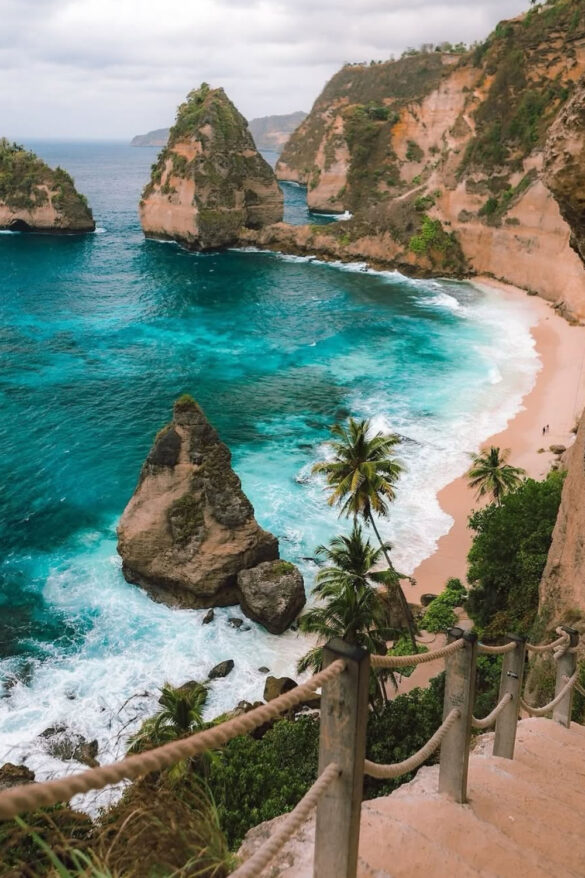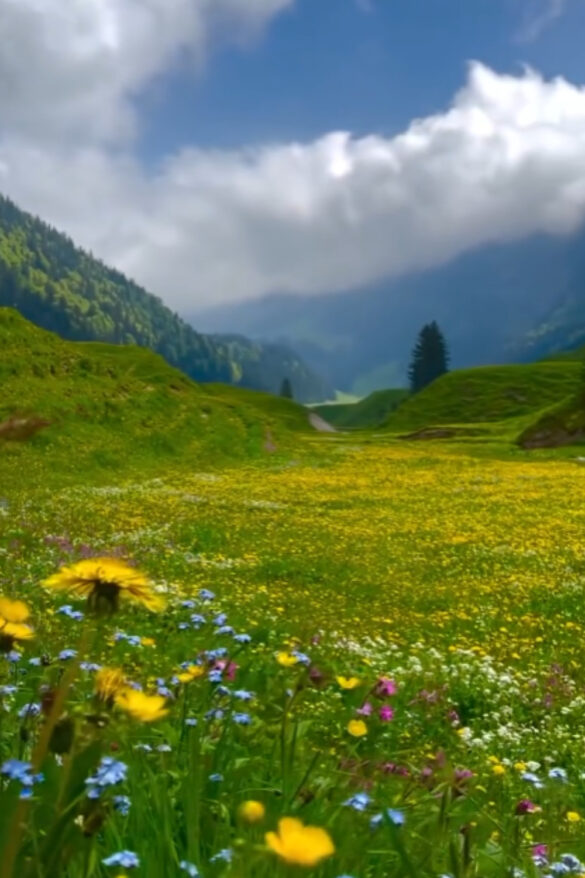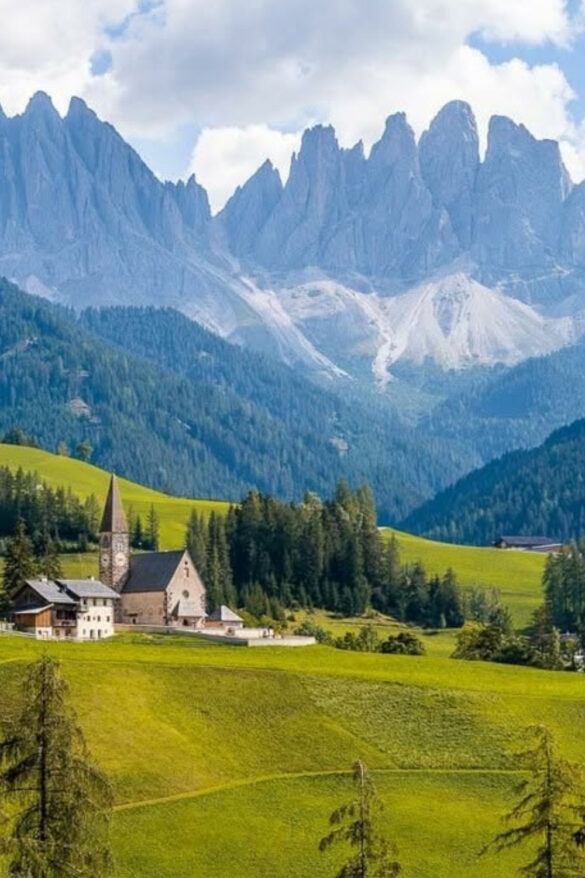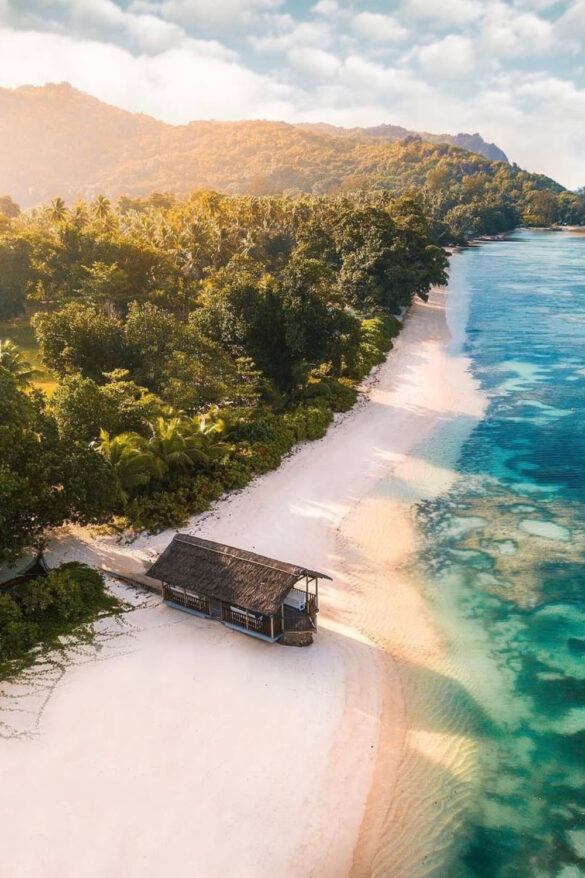Discover the Magic: How to Find the Best-Kept Secret Hiking Trails in the Swiss Alps
The Swiss Alps are known around the world as a land of great mountains, crystal-clear lakes, and green valleys. Every year, millions of people visit its worn-out routes in search of the legendary scenes portrayed in the postcards and travel literature. But the sophisticated traveler will find another form of magic the best-kept secret hiking trails in the Swiss Alps. These are the tracks less traveled, with privacy, pristine natural scenery, and a pure experience of the wild heart of Switzerland, with no maddening crowds of people. Though the popular routes have breathtaking views, they usually have a lot of people, especially during the high season. Instead think of a trail where the rustling leaves of winter and a distant cowbell are the only sounds you will hear, where your panoramic vistas will be shared only with the eagles circling far over-head, and where every curve will be a surprise,–one moment an arolla pine forest hundreds of years old, and the next a waterfall thundering down into an emerald pool. This opening is a prelude to a trip that goes beyond the books, beckoning hikers to delve further and deeper into a relationship with one of the most spectacular mountain ranges in the world. It describes the beauty of discovering something new and the extra perks of discovering this type of hidden gems and transforming an average hike into an exceptional one.
Why Seek Out Secret Trails?
- Sensations of Unmatched Isolation: Get away and have some rest in nature.
- Pristine Wilderness: Explore wild places and wild lands.
- Activities: Get to know the nature or get to know the local culture.
- Extraordinary Views: View the Alps the way few people do.
- Personal Contraption and Reward: Finding how and working it out.
Our adventure into the discovery of the best-kept secrets hiking trails in the Swiss Alps will provide you with the knowledge and tools to discover these mysterious trails. We will explore the means, tools and attitudes required to make your Swiss Alps mountain hiking experience both unique and spectacular, and uncover the very nature of this wonderful mountainous paradise.

Tools and Strategies to Uncover the Swiss Alps’ Secret Hiking Trails
Discovering the best secrets of the Swiss Alps means going beyond the most widespread online platforms and traditional guide books. Although apps such as AllTrails and Komoot are great when it comes to popular trails, they tend to cause congestion on the routes. A combination of modern technologies, traditional resources, and local insights is what is required to discover the best-kept secret hiking paths in the Swiss Alps. This multi-dimensional product will bring a new world of actual, remote and beautiful adventures.
Using Technology to Discover.
The only difference between modern technology and exploration is the proper use of technology, and the best tools to find secret trails.
- Authority Swiss Mapping Applications: Swing left and go to the source. The swisstopo app (official, by the Federal Office of Topography) is a tool that can not be ignored. It offers very detailed topographic maps of the whole country, as well as all the official hiking, mountain hiking, and alpine routes. Most importantly, it enables you to view even the most faint of trails and hidden alterations in terrain that other applications overlook. Maps can be downloaded and used offline, the user can create and share their own tours, and you can see the landscape in 3D. Similarly, the SwitzerlandMobility (SchweizMobil) application and webpage are excellent tools, which describe hundreds of official routes and their present status. Although they are used on formal paths, they can be adapted to find lesser-known linkages between tourist zones.
- User-Generated Content Platforms: Sometimes popular platforms are over-saturated, but on the other hand, they are worth digging deeper. Find the way with fewer reviews or off-the-beaten-path labels. Higher level forums and communities like hikr.org and camptocamp.org are treasure troves of high end hikers. Local mountaineers/ climbers visit these sites and post detailed reports on their trips with GPS tracks and the current trail conditions of routes that would never be seen in a commercial guide. Here you will be able to get the deep information on the best-kept secret hiking trails.
The Thesis of Traditional and Local Knowledge.
Technology is wonderful but there is nothing like deep intimate knowledge of a local. It is the very key to find out concealed paths.
- Specialty Guidebooks: Find guidebooks published by other companies such as Cicerone Press that are narrowly specialized in a certain region or long-distance trail. Such books usually feature historical background, local tales, and descriptions of earlier trails that were created before the advent of the modern GPS. Take the case of a book devoted to the Val d’Hérens or the Engadine district, which will furnish a degree of detail inestimably greater than anything that an ordinary guide book to Switzerland can give.
- Talk to the Locals: This is the perhaps the best strategy. Ask at the bakery, a small hotel, or a mountain hut (also known as a Hutte or cabane in Swiss German and French, respectively) when you happen to be in a village. A pleasant conversation with a farmer, hotelier, or a mountain guide can result in an insider tip regarding a beautiful trail to a remote Alp (alpine pasture) or a remote lake that is not shown on any map. An actual real-life example of such a situation was a hiker who by merely inquiring of the host in their guesthouse, was shown a little-known trail above the village of Fionnay in the Val de Bagnes which provides a breathtaking, unobstructed view of the Grand Combin massif that most tourists will never see.
A case study practical approach.
To explain this, we would give a practical example of how to find a hidden hiking path. You might want to see a fantastic view of the Matterhorn without the traffic of the well-known Zermatt tracks.
- First Research: Check swisstopo or Switzerland Mobility to find some of the trails in the Val d’Hérens or Val d’Anniviers, valleys next to the extremely popular Mattertal. You will find lots of paths to distant mountains and crossings.
- Dive Guidebook: read a guidebook such as, Walking in the Valais by Kev Reynolds. You could read about a three-day hike, which crosses the isolated village of Grimentz. There may be a by-path to a small peak referred to in the book.
- Local intel: In Grimentz you pull up at a small cafe. The owner, the lifelong resident, explains to you how one of the shepherds leads a path out of a high pasture up to a ridge where you can see, without hindrance, the north side of the Matterhorn which is seldom seen by people in Zermatt. This is a hard road and not very well-maintained and the owner gives you a sketch on a napkin and a couple of landmarks to follow.
- Final Planning: You cross-reference what the owner has asked you to do with the digital map using swisstopo app, paying attention to such common features as crossing streams and changes in elevation. You grab the corresponding part of a map to use on the fly, load your gear and head on a real adventure, with a magical combination of new technology and old local knowledge.
Navigating and Enjoying Your Secret Trails
Discovering a hidden path is one thing but getting through it safely and unharmed is another. These secret paths are not always well-marked and regularly popular pathways: sometimes they are so secret that there is no extensive signposting, and contain surprises. Your experience is much safer when you are extremely safety-conscious, prepared, and respectful. The reading will equip one with the necessary information to hike the best-kept secret trails in the Swiss Alps and transform potential dangers into manageable components of an experience to remember.
Both set ups and Hazard Preparations.
Once you are off the beaten tracks, then your equipment and planning are of the essence. The uncertainty of the weather and landscape of the alps requires a greater degree of self-reliance.
- Navigation Tools: Do not use your phone only. Always bring a physical map (swisstopo, e.g.), and a compass, and learn how to work with them. You also need a phone power bank that can be carried around. This has the added advantage of being able to use both digital and analog navigation which means you will never get lost even when your technology does.
- Layered Clothing: Alpine weather is changeable in a matter of minutes. What promises to be a nice morning may turn into a cold rainy afternoon. Carry a waterproof and windproof jacket, insulating (fleece or down) and moisture wicking base layers. It is known as a system of layering and enables you to have adaptation to the changing conditions.
- Footwear: Hiking boots that are well-built, waterproof, offer good ankle support, and have a durable sole are not negotiable. Hidden paths are irregular, rocky, and slender, and the best protection you have against injury is a decent pair of footwear.
- Emergency Kit: You should have a headlamp, first-aid kit complete with blister plasters, a whistle, a rescue blanket and a small knife. You can also bring more food and water than you think you will need.
- Communication: This is in informing somebody about the plan to hike and the route you will take and your expected back time. A satellite messenger (such as a SPOT device or Garmin InReach) can literally be a lifesaver in remote locations, where there is no cell service available and you can relay an emergency message.
Learning about Swiss Trail Classifications.
Swiss hiking routes are carefully categorised and coloured. Though secret paths do not necessarily always fit into these types, knowledge of the system can guide you toward realizing the difficulty of your planned path and anticipate what will occur.
- Yellow Signs (Wanderweg): these are the easiest roads and are usually well-marked and can be taken by anybody of sufficient fitness.
- White-Red-White Markings (Bergwanderweg): these are mountain hiking paths. They are more difficult and steep with narrow lanes, loose scree, and exposed areas here and there. They must be in good physical shape, surefooted and have no fear of heights.
- White-Blue-White Markings (Alpinwanderweg): these are mountain walks or hiking trails, the most challenging grades. They can be generally unmarked on the floor and could involve simple climbing abilities, ropes and ice axes. The most secret and wildest of the best-maintained hiking trails can be found here.
Table: Swiss Trail Classifications at a Glance
| Classification (Sign Color) | Difficulty Level | Typical Terrain | Recommended Equipment |
| Wanderweg (Yellow) | Easy to Moderate | Paved paths, forest roads | Sturdy walking shoes, water |
| Bergwanderweg (White-Red-White) | Moderate to Difficult | Narrow paths, loose rocks, steep inclines | Hiking boots, map/compass |
| Alpinwanderweg (White-Blue-White) | Difficult, Expert-level | Glaciers, scree fields, exposed sections | Ropes, ice axe, alpine gear |
Respecting the Environment and Local Culture
The responsibility that goes with hiking such trails is to ensure that nature around them remains pristine and that local practices are respected.
- Leave No Trace: follow the basic principles: Pack it in, pack it out. Where wildflowers, rocks, and historical artifacts are, keep them. Use the trail to avoid erosion and destruction of sensitive ecologies.
- Use Privately Held Property With Respect: Lots of tracks run through working farms and alpine pastures (Alpen). Be polite to fences and gates, watch livestock. Do not disturb grazing cows and their herders. This is not a Swiss souvenir cowbell.
- Give Back To Local Communities: Accommodate in small family guesthouses, have dinner in town, and go shopping in their village shops. Your financial resources will be important in maintaining the lifestyle that makes these secret trails possible. It is such a little gesture but very much appreciated to be able to pay a favor back to the communities that have the keys to the well-kept secrets of the best hiking trails in the Swiss Alps.
Being ready, knowing the grounds, and being a good visitor not only assists you in taking care of yourself but also gives these silent natural treasures an opportunity to live up to the next wave of travelers.

A Sample Itinerary: The Glarus Alps’ Hidden Gems
With the tools and the navigation techniques, we have discussed, now we will take all these factors and compile a sample itinerary to locate the best-kept secret hiking trails in the Swiss Alps. Rather than going to one of the more popular destinations such as the Jungfrau, or Zermatt, we will go to a place that is familiar to the locals, but mostly unknown to foreign tourists, the Glarus Alps. This particular itinerary would help demonstrate how the concepts of the sections above can be utilized to build a really wonderful and distinctive adventure.
Why the Glarus Alps?
In the canton of Glarus, the Glarus Alps present a unique blend of rugged mountains, calm alpine lakes and dramatic geological features with only a tenth of the foot traffic of better-known locations. Another area of interest is the history of the region, especially the industrial history of the region, the geological peculiarities of the region, and the UNESCO-proposed Sardona Tectonic Arena. In this case, you will be able to find solitude within a few minutes of a train ride to Zurich and it is the perfect place to go when you want to have a real escape. The trails are also in good conditions, but there are significantly fewer people on them, which will give you the ideal environment to practice your abilities in locating and enjoying the best secret trails in hiking.
The Itinerary: Day by Day Tour.
This route has been devoted to a circuit of spectacular loop which carries you to an undiscovered high-alpine lake and to a lesser-known mountain-pass, and whose scene will rival that of the more well-known districts.
Day 1: The Ascent to Obersee
Morning: Train to Nafels-Mollis, and local bus to little village of Vorauen. The trip in itself gives us a preview of the local way of life.
- Hike: At Vorauen, take the signs on to Obersee. The first part of the trail is clearly defined, but after the first ascent, we begin our secret trail. Instead of going around the lake, look on your swisstopo map, and you will see a narrow track going up the side of the mountain to the Bodemli lookout. This road cannot be found on most tourist maps but is a local secret, and a tremendous view of the Obersee and the peaks. The path is also steep and needs sure footedness (Bergwanderweg – white-red-white).
- Afternoon: following the sight-seeing, retrace the way to the lake, thence up the path less traveled to the summit of the lake, whence a little, homely mountain hut, known as Berghaus Obersee, is to be had. This is what you are going to stay overnight in.
- Evening: Have a light yet tasty dinner, which can include any local cheese and cured meat. Talk to the hut keeper (an invaluable source of local information) who could give you a tip about some of the lesser-known tracks in the region.
Day 2: Sardona Tectonic Arena.
Morning:–Take a good breakfast, and then set out to ascend to the Rautialp. This is not a well-advertised trail, but another important part of our investigation to identify the best-kept secret hiking trails in the Swiss Alps. The road leads through a quiet alpine meadow in which you will find cows grazing.
- Hike: Hike up to the Sardona Tectonic Arena which is a UNESCO world heritage site. Here you will observe a beautiful geologic feature called the “Glarus Thrust” in which older geologic formations have been forced over more recent ones. We have a clandestine path over a ridge of high land frequently passed by foot travelers who want to reach the principal passes. Take the path that leads off to the Muttsee reservoir. It provides unbelievable and sheer views of the whole arena and the peaks that are surrounding it, not forgetting the mighty Toddi.
- Afternoon: Fly down the ridge to the Muttseehuttte, another mountain hut on the high side of the ridge. It is a very important staging-point, though, on this occasion you do not stop the night, but proceed in the direction of the village of Linthal, making a picturesque circuit. The last part of the trail is a steep one but clearly marked.
Some of the main lessons gained during the Itinerary.
This sample itinerary illustrates some of the key principles of discovering secret trails:
>Start at a Known Base: begin at a well travelled point (Vorauen/Obersee) and follow feeder streets. This is a strategy that strikes the right balance between access and solitude.
- Bring Local Knowledge: The tip to speak to the hut keeper is based on a practical implementation of the approach described above. These people can be described as sources of information.
- It is not smooth along to Bodelemi or the high ridge. These breathtaking sceneries are paid with pain that one has to endure to reach the reward.
- Showcase the Unique Geology and Ecology of the Glarus Alps: The specificity of this itinerary is clearly designed to help all people appreciate the region better and understand the unique geology and ecology of the area.
The given trip along the Glarus Alps is an illustration of how one can practically apply the knowledge one has acquired and the secret ways, on which the hiking trails of the Swiss Alps have to lead, are not a myth which one assumes it to be, but is the reality which awaits those who are ready and willing to discover it.

Final Thoughts: The Spirit of the Secret Trail Seeker
The search and find the most secret hiking trails in the Swiss Alp is a physical as well as a modifying the way of thinking search. It has to do with forgetting the tourist checklist and the spirit of the explorer. The benefits are incalculable, the sense of loneliness that you get when you are on a ridge and there is no other person in sight is priceless and the connection that you can have with the natural world is unique and personal. The last part is an afterthought about whether the journey to find these hidden gems is worthwhile and a final word of encouragement on your future wanderings.
The most dramatic moments in the Swiss Alps are usually those which occur when you are least in need of them, when you are following a trail which you were never aware of before, when you have been tracing the topography of a region until a faint line on the map indicates the presence of a fresh opportunity. It lies in the finding of some forgotten Alp hut, where time apparently sleeps, or of a rare Edelweiss bloom in a spot where none had ever peeped. It is during such moments that a hike will be turned into more than a scenic walk and become an adventure.
Summary of Key Principles:
- Go Beyond the Obvious: Do not fear to get off the beaten track. The Alps are so beautiful and right there you find them, just round the corner, waiting to be noticed by those who have the courage to do so.
- Take the Risk: Secret trails tend to be more challenging. How hard you work to locate and manoeuvre through them directly corresponds to the individual rewards you will get.
- Local Knowledge You Can Trust: It is not an application, but a human being that will provide you the best resource. The key to the most hidden secrets of the Alps is interaction with the locals and an appreciation of their lifestyle.
- Always be Ready: Pursue Safety and Respect Know the Risks: Leave No Trace. It is up to you to protect these clean neighborhoods.
A quest to discover the most secretive mountain hiking routes in the Swiss Alps is a way of rebelling against mass tourism and asserting that you want to experience something more natural. It is a chance to make your own original narrative, not one dictated by a guidebook or viral social media content.
When you are organizing your further visit, do not forget that the most popular places are not necessarily the most impressive. The very heart of the Swiss Alps pumps best in its silent valleys, in its forgotten passes, and in its hidden streams. then you should get up and pack your bags, put on your boots, and go out to see one side of Switzerland few will ever see. The mountains are waiting.
Happy and safe trails!





